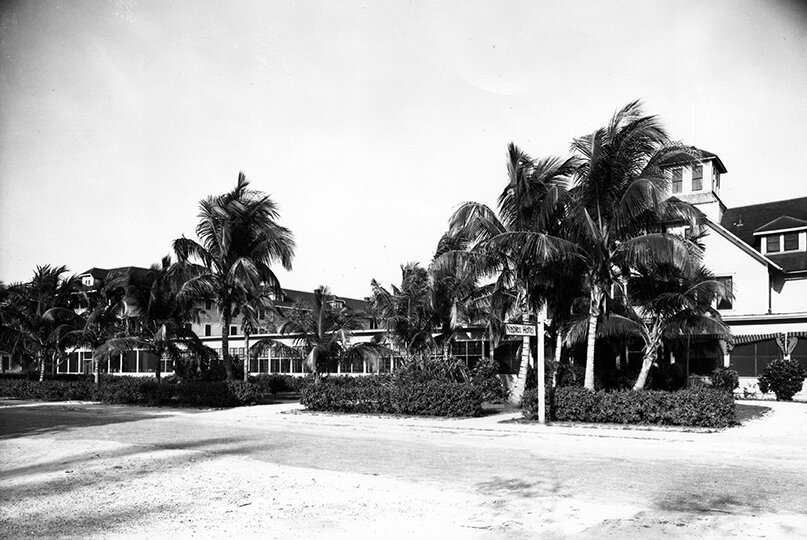A history of southwest florida and its paradise coast
In the late 1800s, during U.S. surveys of Southwest Florida, a senator from Louisville, General John S. Williams, was spellbound by descriptions of the area and planned to visit Southwest Florida, buy land and develop a city.
He recruited Walter Haldeman, the owner of the Louisville Courier Journal newspaper, for the expedition. In 1885, the men chartered a boat and sailed down the coast looking for a piece of mainland where they could establish their city. As they sailed by the location of present-day Naples, they noticed the miles of beaches, and when they discovered a bay just behind the beach, they thought they had found paradise.
The Naples Town Improvement Company was founded in the autumn of 1886 to establish a town named Naples, reminiscent of the Italian peninsula, and develop it as a winter retreat. The company purchased 3,712 acres between the Gulf of Mexico and what is now known as Naples Bay for $11,136, or $3 an acre.
In the next few years, both Williams and Haldeman built homes on the beach, hired a Fort Myers firm to build a pier and had survey teams plan their city. At the center of their city was a 16-room hotel situated two blocks inland from the pier at the narrowest piece of land between the beach and the bay. The hotel opened in 1889 and Rose Cleveland, the sister of President Cleveland, was the first guest.
By 1889, the Naples Town Improvement Company was running short of funds and borrowing from Walter Haldeman. He had so far invested $35,000 into the venture, and other investors were tired of losing money. On January 10, 1890, the Naples Town Improvement Company was sold at public auction on the steps of the Naples Hotel. The only bidder was Walter Haldeman, and for $50,000 he bought the company in its entirety including 8,600 acres of land, the hotel, the pier, the steamship Fearless that transported guests to and from Naples and General Williams' house. Mr. Haldeman continued to promote Naples, but more and more over the years he ran the hotel and the town as a loving hobby.
Ed Crayton, a successful land developer from St. Petersburg, came to town in the early 1900s. There he met Walter Haldeman's son’s secretary and they were shortly married. At the same time, Mr. Crayton bought all of Haldeman's property except for his home. Thus, a new chapter in Naples history began. Mr. Crayton developed Naples until his death in 1938, at which time the estate passed to his wife, Mrs. Lindsey Crayton until the 1950s. Under the Crayton’s supervision, many changes were made during this time including the introduction of electric power in 1926, the rail service in 1927, and the completion of Tamiami Trail in 1928. With high hopes of big development, a market crash in 1929 and then World War II a few years later kept Naples a small but lovely oasis until the mid-1950s.
Collier County's creation in 1923 and its early economic growth were closely tied to Memphis-born millionaire, Barron Gift Collier. With his fortune from streetcar advertising, Collier introduced paved roads, electric power, telegraphs and countless new businesses and homeowners to Florida's last frontier. The completion of the Tamiami Trail in 1928 also unlocked the region's enormous agricultural and resort potential.
Many veterans returned to Naples after the war as prospective home buyers and businessmen.
World War II introduced hundreds of aircraft servicemen to Naples and Collier County when the U.S. Army Air Field, now Naples Airport, was activated in 1943 to train combat pilots. At one point, several hundred men and 53 aircrafts were assigned to the Naples base. Many veterans returned after the war as prospective home buyers and businessmen. A direct hit by Hurricane Donna in 1960 stimulated Naples' growth with an infusion of insurance money and loans.
The county seat was transferred from Everglades City to East Naples in 1962, signaling a new era of sustained growth in agriculture, tourism and real estate that has made Collier County one of the fastest developing areas in the nation.





